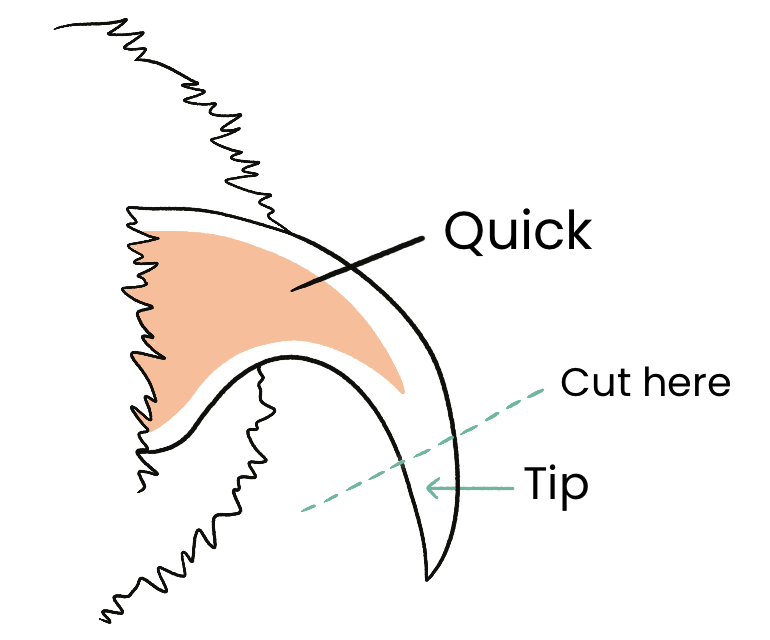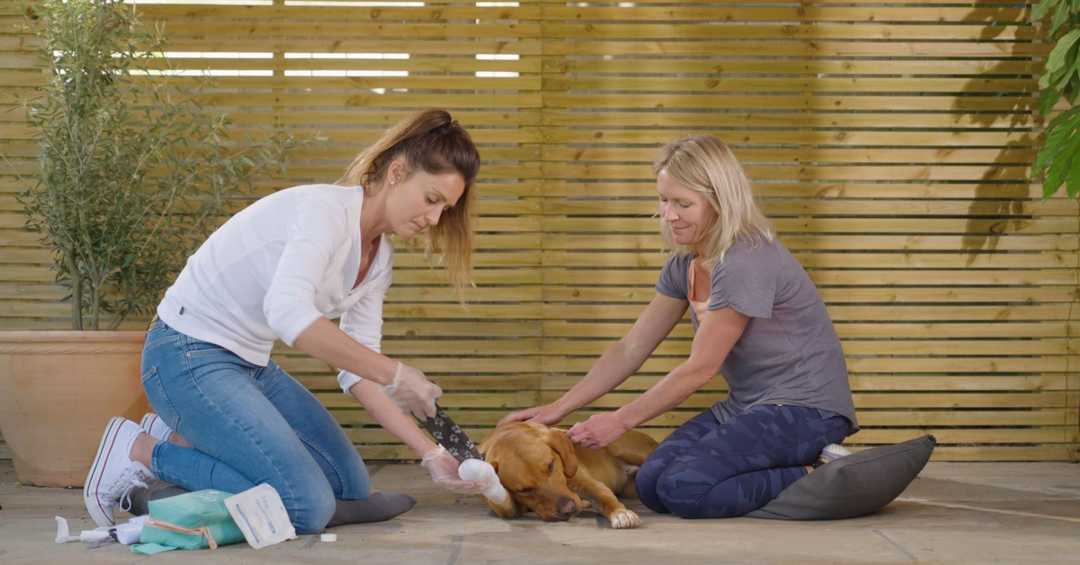Trimming Cat's Nails
ABOUT CAT'S NAILS
(AND WHEN TO CLIP THEM)
- Like our nails, cat's nails (also known as claws) grow continuously.
- Active, outdoor cats naturally wear down their nails (whilst still keeping the tips sharp) by doing things like climbing trees.
- Indoor cats can maintain their nails with things like scratching posts .
- Cat's usually retract their front claws, so that when they are resting you probably won't be able to see them at all. This helps them to walk quietly and stops them snagging their nails as they do so.
- If your cat's nails get too long you may notice that they are starting to tap on hard floors and catch on the carpet. You may also be able to see their claws when their paw is resting.
- If your cat's nails get too long they are more likely to catch and get torn and can even start to curl around and grow into the pad, which is very painful and commonly leads to infection. If your cat's nails are growing into towards their pad please seek veterinary advice. These can be tricky to cut and your pet may need some pain relief and antibiotics.
- It is important to regularly check your cat's nails, especially in older animals with arthritis (they may find it difficult to use scratching posts or retract their nails) and in long hair cats (it can be hard to see when their nails get too long). Also, don't forget to check their dew claws (thumbs) as these don't contact the ground so can easily become overgrown.
- You should only trim your cat's nails if they are too long and where possible it's always best to let your cat wear their nails down naturally.
- If you're not sure if your cat's nails need trimming please contact your vet for advice.

HOW TO TRIM Cat'S NAILS
What you need
- Correct sized nail clippers that are sharp and in good working order.
- Plenty of treats to give as rewards.
- A styptic pen (or corn flour or a bar of soap) to help stop bleeding if you accidently cut the quick.
- If possible, an extra pair of hands to help keep your pet calm and still.
Cat nail trimming - before you start
- Ideally before you trim their nails for the first time, get your cat used to the nail clippers and you handling their paws and retracting their nails.
- It may be that you have to do one nail a day until they get used to it. Remember to use lots of rewards (praise and treats) to make it a positive experience. Always stop if they look uncomfortable or stressed.
- Make sure your pet is relaxed and comfortable.
- It is often useful to get someone to help you safely restrain your pet. Although some cats will sit on your lap and let you do it with minimal restraint.
- Take care if your pet has painful joints (e.g. due to arthritis) - if in doubt, get veterinary advice.
Cat nail trimming - step by step
- Gently push on the top and bottom of the toe to expose the nail fully.
- Identify the quick, which is the pink area in the nail. It has a rich blood and nerve supply, so if you cut it, it will be painful for your cat and can bleed quite heavily.
- In most cats you should be able to see the quick easily. If you can't just take the tips off if they look long or get veterinary advice.
- Gently trim the nail to about 3-4mm under the quick at a 45 degree angle.
- Take your time and reward your cat after each nail. Stop immediately if they become unhappy or try to run away.
- Once you've trimmed your cat's nails they may want to sharpen them again, so may scratch more afterwards to get their nail back to a pointed shape.

IF YOU accidentally CUT THE QUICK
If you do accidently cut the quick, apply pressure with gauze swabs (from your kit) or kitchen roll and touch the styptic stick in your kit to the exposed quick to stop bleeding. If you don't have this try coating the area in cornflour or dipping the nail into a bar of soap. If the bleeding won't stop after 5 minutes apply a bandage (if your cat will allow) and go to your vets.






